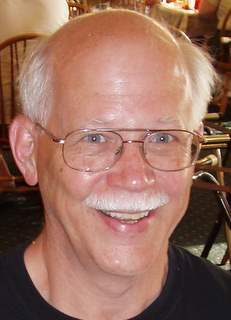Designs to wood burn can be found in design books such as Handbook of Ornament, children's coloring books, and artwork from the internet. Designs can be traced onto wood using tracing paper (different colors allow use on both light and dark woods). He usually uses a ball point pen to trace since the rounded pen nib is less likely to be diverted by the wood grain.
The Woodburner
There are quite a few wood burners available from very inexpensive single pens to burners that accommodate several pens and allow regulation of the heat.
Paul uses a Detail Master unit like this one with several pens, mainly the 6A and 10A pens. He suggested gently filing the 10A tip to a more rounded configuration to ease in its use. While there are many more pen styles available for shading and feathering, most of the detail work for woodturners can be accomplished with just two or three pens.
Paul uses the rubber finger guards to reduce the heat and a small fan to disperse the smoke away from his face. There are vented pens available which also would help in reducing the heat.
Woodburning gives the turner the ability to add both texture and color to turnings. Various pen points will allow for a variety of textures. The burner can outline shapes and fill voids with various textures. Once the wood is sealed with the woodburned line, color will not bleed across the line. Then outlined objects can be colored to accentuate their form on the turning.
Once the design is burned, it is wise to sand with 400 grit sandpaper to remove burrs and nubs and to wipe the turning with alcohol to remove some of the excess burned coloration.
Color
Paul along with several other club members endorsed Pigma Colors pens. It is easy to overlay one color on another to provide shading and an increased pallet of colors. Once the coloring is completed, a light coating of sealer or fixative is necessary to prevent bleeding of the colors as finish coats are applied.
Pat Catans was a recommended source for the multi-colored tracing paper, Prisma Colors, and Krylon workable fixativ.
Pat Catans was a recommended source for the multi-colored tracing paper, Prisma Colors, and Krylon workable fixativ.
